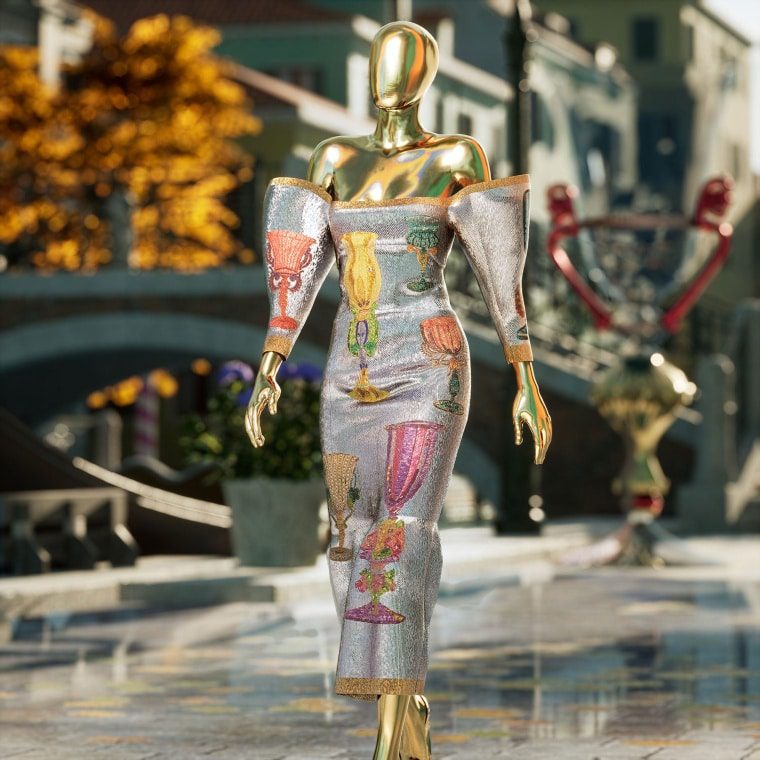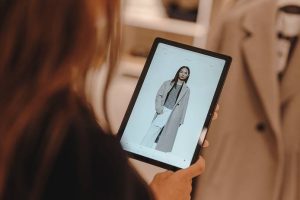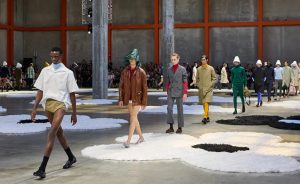The pace of creativity and digital innovation is rapidly increasing in fashion and there is a race among entrepreneurs and fashion brands to innovate and stay ahead of the curve in this fast -paced industry. These are interesting times as the metaverse aims to democratise fashion by allowing anyone with a computer and certain software to showcase their ideas, designs and collections. Additionally, when garments are created from a digital-only perspective, it encourages unique, creative designs. Per Morgan Stanley, Web 3.0 revenue opportunities for the fashion and luxury industries could amount to $50 billion by 2030 with NFTs and social gaming presenting the main areas for growth. And with AI also taking centre stage in fashion, it’s time to examine the effect the metaverse and artificial intelligence will have on a fashion brand or a designer’s representation, visibility and identity.

Metaverse Fashion
As fashion evolves it is important for fashion designers and brands to embrace change. Won Soh, co-founder of Space Runners, the first digital fashion brand for the metaverse, told Forbes: “If you really want to be an innovator don’t be afraid of trying and don’t be afraid of change… We have a big community behind us, which makes it easy to find the motivation and energy to innovate even more.” Indeed, the Metaverse has levelled the playing field for fashion brands and designers entering the space. There are marketplaces and web development agencies that provide end-to-end services to integrate a fashion brand or creator into the Metaverse. For example, Metaverse+ powered by NFT Brands Inc. integrates fashion brands and independent designers in the virtual space and helps increase consumer engagement.
If most virtual collections by designer labels and fashion brands — often in collaboration with gaming giants such as Roblox and Zepeto — are similar to their real-world collections, specialist platforms are pushing the envelope. For example, virtual couture e-store DressX retails a huge assortment of apparel from classic to wearable art and futuristic design. And Balmain has partnered with digital fashion community Space Runners to launch NFTs modelled on the Unicorn sneaker in a new colour-way that will accompany physical versions of the shoes. this alliance will unlock exclusive privileges and bridge Web2 with Web3.

Balmain X Space Runners
“Fashion will be just as – if not more – important in the metaverse than in the real world,” Pantera’s Paul Veradittakit told CoinDesk. In recent times metaverse fashion brand Space Runners has raised $10 million in a funding round co-led by Polychain and Pantera Capital. Also participating in the seed round were Accel and Jump Crypto, as well as angels like Animoca Brands Chairman Yat Siu and Twitch co-founder Justin Kan.
Among fashion designers embracing the Metaverse is Phillip Plein, who bought virtual real estate on Decentraland where he opened the Museum of NFT Arts and exhibited Metaverse-only outfits for avatars. Since most consumers did not have crypto wallets, he sold the NFTs on his website where people could pay with credit cards or ApplePay. There are many success stories like that of upcycled fashion label Imitation of Christ partnering with Bored Ape Yacht Club on sweater dresses, or French e-commerce accessories platform Monnier Paris retailing digital clothes on its own website with a cryptocurrency payment option or even tech couture house Auroboros launching digital-first fashion.
Fashion designers, brands and retailers are also increasingly seeing the benefits of using generative AI. Instead of relying on trend reports and market analysis alone to inform designs for next season’s collection, fashion retailers and fashion brands are using generative AI to analyze unstructured data in real time. “Generative AI can, for example, quickly aggregate and perform sentiment analysis from videos on social media or model trends from multiple sources of consumer data” per McKinsey. “Creative directors and their teams could input sketches and desired details—such as fabrics, color palettes, and patterns—into a platform powered by generative AI that automatically creates an array of designs, thus allowing designers to play with an enormous variety of styles and looks. A team might then design new items based on these outputs, putting a fashion house’s signature touch on each of the looks. This opens the door to creating innovative, limited-edition product drops that may also be collaborations between two brands…”
Traditionally, clothing design is a creative process that involves a lot of trial and error. Now with the help of AI, stylists can create new designs more efficiently and accurately. One of the. early cases of using AI in the fashion industry was witnessed in December 2022 when a group of Hong Kong–based fashion designers from the Laboratory for Artificial Intelligence in Design held a fashion show featuring generative-AI-supported designs. Today it is becoming commonplace. Using tools from tech companies such as Cala, Designovel and Fashable, fashion designers are increasingly experimenting with generative AI to get fresh ideas and try design variations without producing expensive samples.
Jasmeen Dugal is Associate Editor at FashionABC, contributing her insights on fashion, technology, and sustainability. She brings with herself more than two decades of editorial experience, working for national newspapers and luxury magazines in India.
Jasmeen Dugal has worked with exchange4media as a senior writer contributing articles on the country’s advertising and marketing movements, and then with Condenast India as Net Editor where she helmed Vogue India’s official website in terms of design, layout and daily content. Besides this, she is also an entrepreneur running her own luxury portal, Explosivefashion, which highlights the latest in luxury fashion and hospitality.











